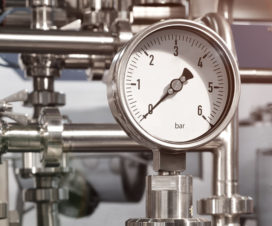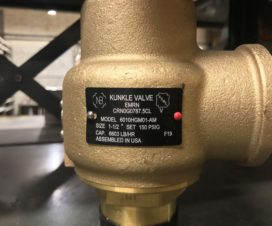
Here at Valves Depot, we get a lot of questions about Kunke valves. Here are the answers to some of the most common.
What kind of valves does Kunkle manufacture?
Kunkle manufactures safety and pressure relief valves.
What can I use Kunkle valves for?
Kunkle valves are incredibly versatile — they can be used for steam, air, and liquid services.
What’s the difference between safety and pressure relief valves?
Safety and pressure relief valves serve the same function — to relieve pressure in industrial processes. However, there are subtle differences between the two types of valves.
Pressure relief valves are used on liquid-filled vessels to prevent overpressure conditions. As pressure slowly rises, pressure relief valves open gradually. They’re generally used in hydraulic systems to prevent equipment malfunction.
Safety valves are used as a fail-safe on compressible fluid- or gas-filled vessels. When the set pressure is reached, safety valves open almost entirely. These valves are common in petrochemical plants, food manufacturing facilities, and more.
How can I be sure that Kunkle valves are reliable?
Kunkle manufactures their valves per ASME Section I, Section IV, and Section VIII codes with National Board-certified relief capacities.
What materials are Kunkle valves made of?
Kunkle valves are designed for a variety of services, so they’re available in dozens of materials, including:
- Bronze
- Brass
- Steel
- Stainless steel
- Carbon steel
- Cast iron
- Aluminum
- Other types of alloys
What sizes do Kunkle valves come in?
You can get Kunkle valves in a wide range of sizes — ¼” National Pipe Tapered (NPT) to 6” flange. Some models have tri-clover/tri-clamp and British Standard Pipe (BSP) thread options.
What temperatures and conditions can Kunkle valves withstand?
Kunkle valves can withstand services at temperatures ranging from cryogenic to 850°F and pressures ranging from vacuum to 7,500 pounds per square inch gauge (psig).
How do I maintain my Kunkle valves?
Preventative maintenance is key for keeping your Kunkle valves in working order and reducing unplanned downtime.
- Perform regular visual inspections. Make sure connections are clean, the drains and discharge pipes are free of debris, and no parts are cracked or broken.
- Test your valve every six months. Kunkle valves are equipped with pins or levers for easy manual testing. Lift the pin or lever to open the valve fully, making sure to take appropriate safety precautions. If your process flows smoothly past the valve, your valve is working — if not, it might be time for a replacement.
What do I need to know to order a Kunkle valve?
When you order a Kunkle valve, you’ll need to know:
- Quantity
- Inlet and outlet size and type
- Trim and bonnet construction material
- Service
- Set pressure
- Unusual conditions (if any)
Further reading: How To Specify Kunkle Safety and Pressure Relief Valves
Can Kunkle valves be installed anywhere?
You can use Kunkle valves in some of the harshest environments. But in places with extreme temperatures, the valves might operate differently than they would under “normal” conditions.
For example:
- High ambient temperatures can affect set pressure
- Low ambient temperatures and moisture can freeze valves
Why should I order Kunkle valves from Valves Depot and not directly from Kunkle?
We keep a vast inventory of Kunkle valves in stock, so we can generally ship valves within three business days. Plus, most orders qualify for free shipping.
When you order from the factory, lead times can be longer and shipping charges may apply.




